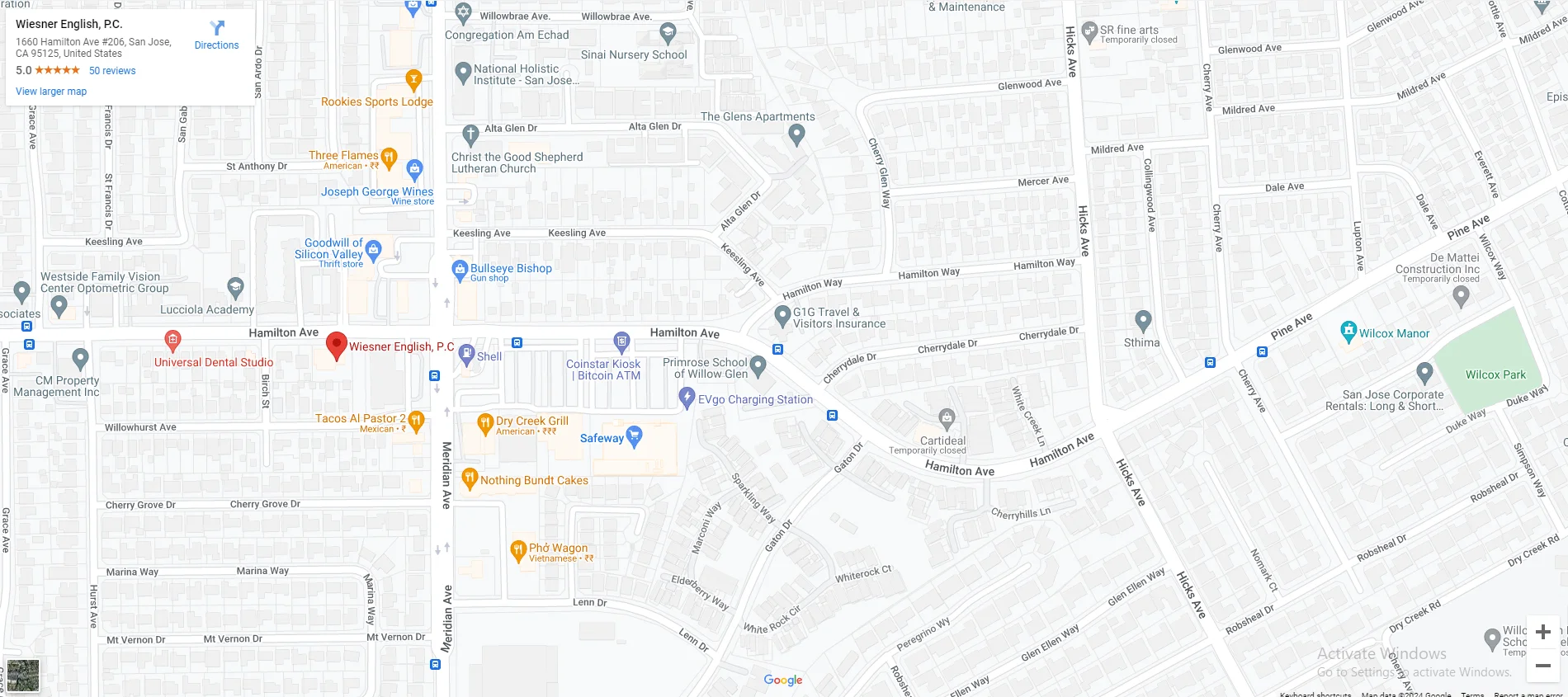|
|
Last Modified on Feb 28, 2024
My earlier post covered issues that arise earlier in a case (AWW, TD, PTPs, WPI, RFAs, UR and IMR). Later in a case, you might encounter one or some of the following situations (with their associated acronyms):
P&S—Permanent and Stationary
A Permanent and Stationary (P&S) determination can be made by a Primary Treating Physician (PTP), or a doctor performing a Qualified Medical Evaluation (QME) or Agreed Medical Evaluation (AME). The term P&S is often also referred to as “Maximal Medical Improvement” or “Maximum Medical Improvement” (or MMI for short), this is the point where—in that doctor’s opinion—no substantial medical change is likely in the next 12 months. (8 CCR § 10152). This is often the point where restrictions and disability go from being considered “temporary” and subject to change to fixed or “permanent.” At this point, the doctor’s report should include findings of permanent impairment and how much of that impairment was due to the work injury. (8 CCR §§ 9785(h), 10682.)
Your employer might make a permanent offer of regular, modified, or alternative work. If not but there is disability and permanent restrictions, you might be entitled to a Supplemental Job Displacement Benefit (SJDB) Voucher (Labor Code § 4658.7) and the opportunity to apply for the Return-to-Work Supplement Program (RTWSP) (8 CCR § 17300 et seq).If you’re still unable to work due to the injury, or working at a reduced salary, the claims examiner might be obligated to issue Permanent Disability Advances (PDAs) (Labor Code § 4650). These Advances are advance payments of the eventual settlement or award.At this stage, settlement options are typically discussed.
SWRFA—Stipulations with Request for Award (or “stips”)
Settling the case with open medical typically involves an agreement (stipulation) to the disability value and a provision for future medical care resulting from the injury. A Workers’ Compensation Judge (WCJ) reviews the agreement and underlying medical reports to ensure the settlement is “adequate.” (8 CCR § 10700.) If adequate, the WCJ should issue an Award providing for payments of disability and future medical care within 30 days (Labor Code § 5313). If the settlement is not acted upon within 45 days, it should be transferred to the presiding judge (PJ) for review. (8 CCR 10346.)
C&R—Compromise and Release
A Compromise and Release (C&R) often settles all work comp benefits for a lump-sum payout. This pays more than the stips or SWRFA because more is being resolved (i.e., not just the value of permanent disability, but the value of ongoing work comp medical treatment and potentially other benefits like unpaid Temporary Disability (TD) you might be entitled to). This also customarily settles any right to “re-open” the case and be re-evaluated for new and further disability. Essentially—in most cases—a C&R results in both sides talking away from each other. You’re paid a lump-sum, the employer or insurance company don’t provide ongoing medical. All work comp benefits are closed and settled.
MSA—Medicare Set-aside Agreement
Anytime medical through a workers’ compensation claim is settled there is a requirement to ensure Medicare will not shoulder the cost of treating the injury. In some cases, a Medicare Set-aside Agreement (MSA or WCMSA) will need to be prepared and submitted to Medicare (the Centers for Medicare and Medicaid Services or CMS) for review. After CMS reviews the MSA and determines an appropriate set-aside amount, they notify you with a letter including the following:
Once the funds in the WCMSA account have been properly spent . . . Medicare will begin paying for the claimant’s Medicare-covered items and services that are related to the workers’ compensation claim.
In essence, you would act as a trustee for Medicare, holding a set amount of money aside from the settlement and only using that money for medical serves related to the injury that Medicare would otherwise cover. There are also reporting and record keeping requirements that you would comply with unless the fund is “professionally administered.”
F&A—Findings and Award
What if a case cannot or does not settle? In that case, the decision of the legal value of disability, amount of apportionment (how much of that disability came from the work injury), whether future treatment is needed, would be submitted to a WCJ. If there is no factual dispute, there might not be a need for witnesses or live testimony at trial. Some cases are submitted on the paper record just so the judge can decide how much disability came from an injury. Some cases are set for trial due to factual disputes that could impact the value of disability (e.g., what occupational code should be used?) or the overall viability of the case (e.g., was there even an injury?). To get to trial on the case-in-chief, a Declaration of Readiness (DOR or DR) is filed for a Mandatory Settlement Conference (MSC). If the MSC does still not result in settlement, issues for trial are outlined in a Pre-Trial Conference Statement (PTCS or “5-pager”) and a trial date is set. After trial, the judge’s decision is rendered through a Findings and Award (F&A).
Judges make decisions based on law and fact. Many situations during the course of a workers’ compensation case might provoke a “take it to a judge” response. However, if a case has not been thoughtfully and methodically established, a judge might not have enough to reach the desired conclusion. This is why it is important to have a case and possible litigation thoughtfully analyzed by an experienced workers’ compensation attorney.
Keep in mind the above are fairly broad-strokes descriptions and each case is different and everyone faces particular considerations. Not everyone will encounter the same options or weigh them the same way. Which is all to say the above is not legal advice in any case and we are happy to set up a consultation to discuss your unique case.








